Denominators - Definition, Examples, Quiz, FAQ, Trivia
Learn about denominators in fractions with easy explanations, visual examples, and practice activities
What is a Denominator?
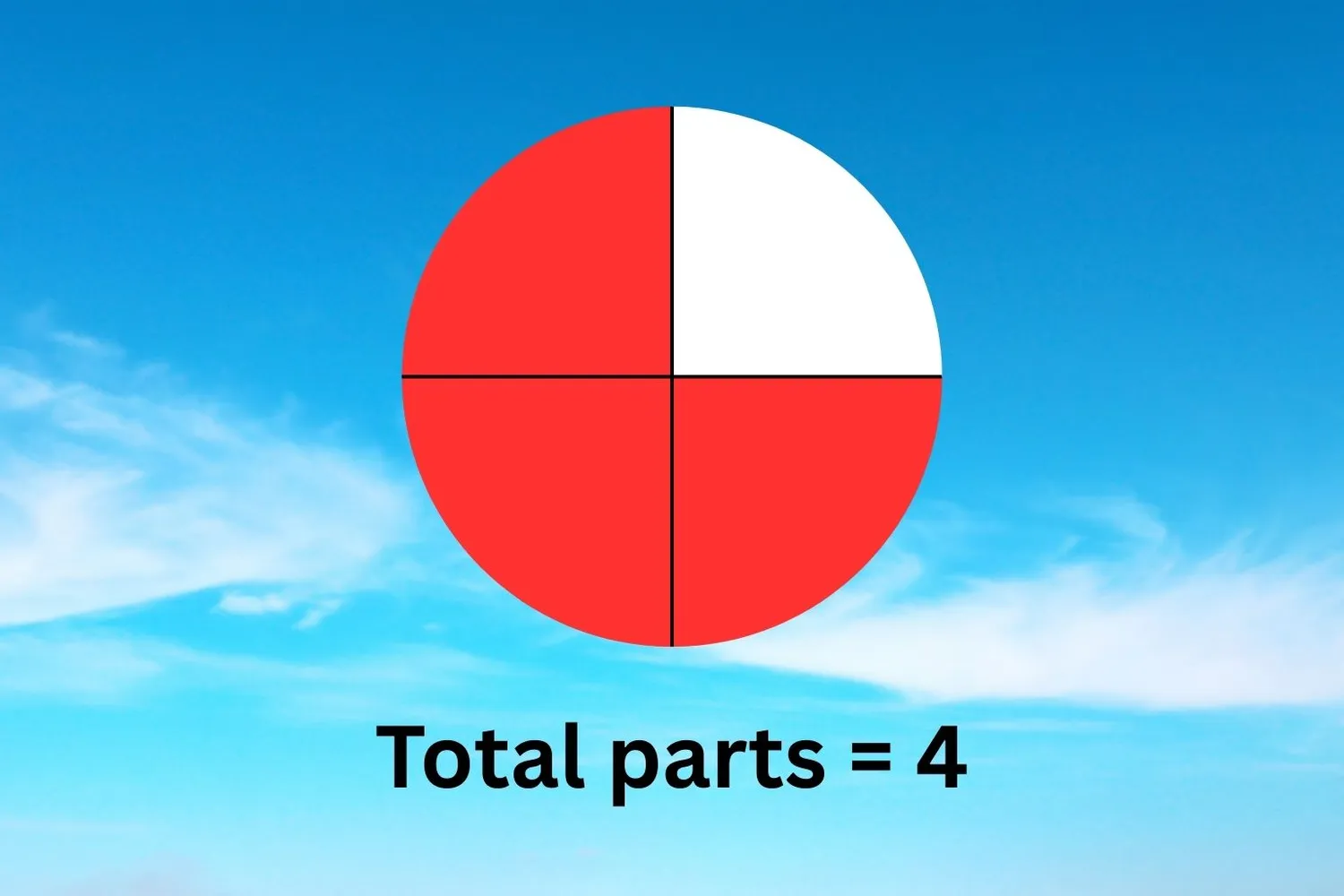
The denominator is the bottom number in a fraction. It tells us how many equal parts the whole has been divided into.
Think of it like this: if you have a pizza cut into 8 slices, the denominator would be 8 because the pizza is divided into 8 equal parts. If you eat 3 slices, the fraction would be 3/8.
The denominator answers the question: "How many total parts make up the whole?" It's an essential part of understanding fractions and helps us compare different fractions.
Key Concept
The denominator is always the bottom number in a fraction and represents the total number of equal parts in the whole.
Parts of a Fraction
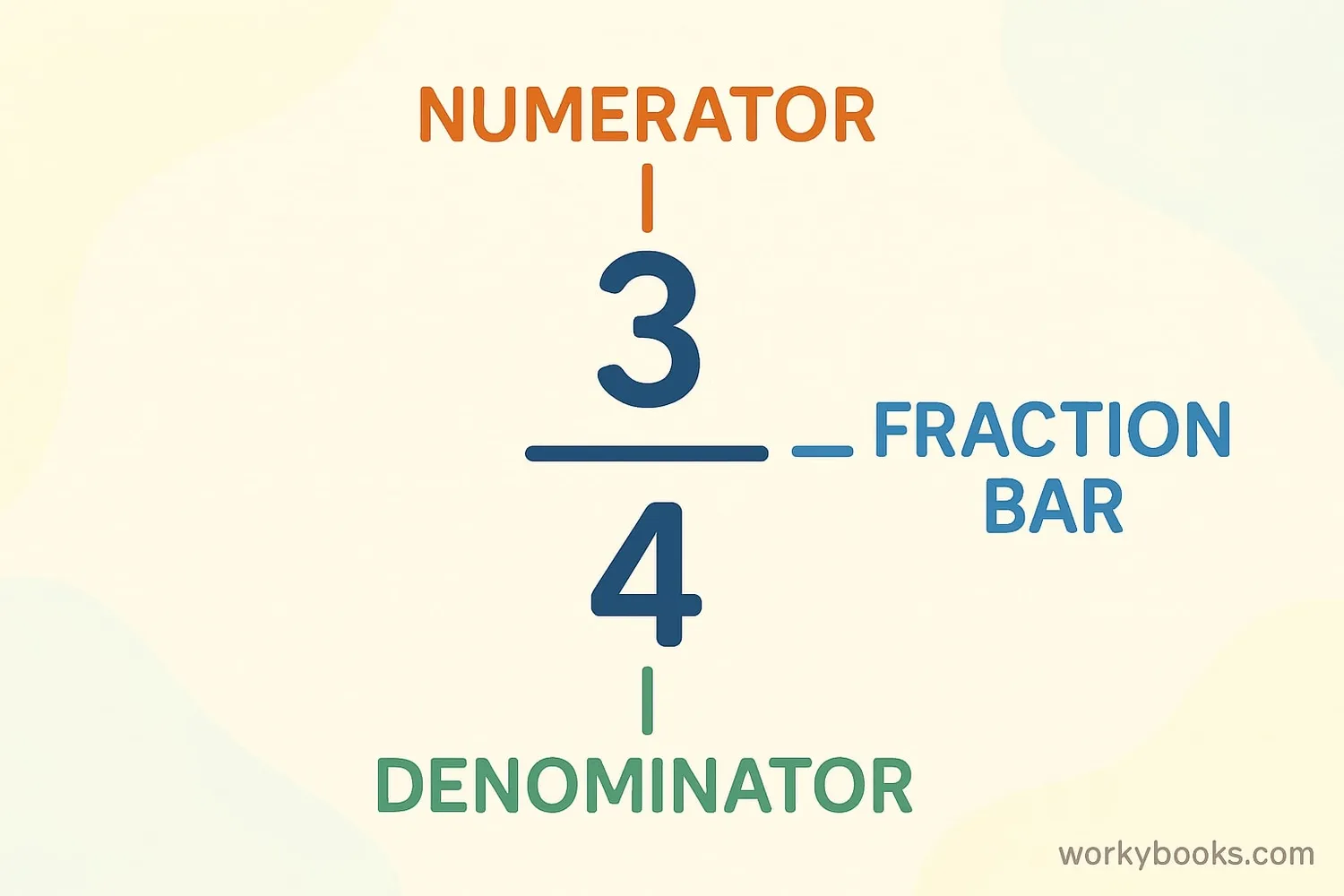
Every fraction has three important parts:
1. Numerator: The top number that shows how many parts we have.
2. Fraction Bar: The line between the numerator and denominator (also called a vinculum).
3. Denominator: The bottom number that shows how many equal parts the whole is divided into.
For example, in the fraction 3/4:
- 3 is the numerator (parts we have)
- / is the fraction bar
- 4 is the denominator (total parts)
The denominator gives meaning to the fraction by showing the size of each part. Smaller denominators mean larger pieces!
Remember
The denominator can never be zero because you can't divide something into zero parts!
Types of Fractions
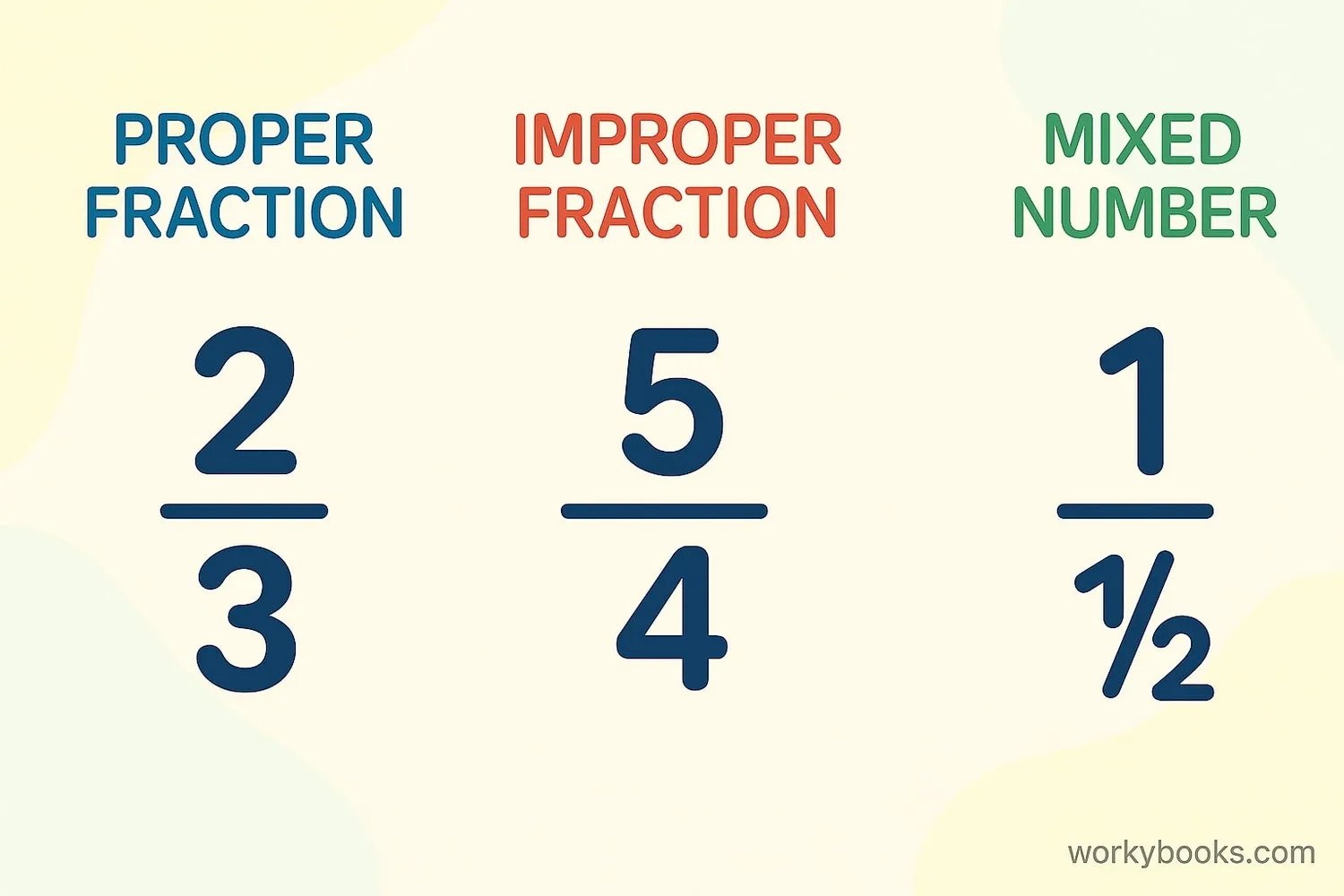
Fractions come in different types based on the relationship between the numerator and denominator:
Proper Fractions: Numerator is smaller than denominator (e.g., 2/3, 3/5). These represent less than a whole.
Improper Fractions: Numerator is larger than or equal to denominator (e.g., 5/4, 7/7). These represent more than or equal to a whole.
Mixed Numbers: A whole number combined with a proper fraction (e.g., 1 1/2, 2 3/4).
Like Fractions: Fractions with the same denominator (e.g., 2/5, 3/5, 4/5).
Unlike Fractions: Fractions with different denominators (e.g., 1/2, 1/3, 2/5).
Unit Fractions: Fractions with numerator 1 (e.g., 1/2, 1/3, 1/4).
The denominator helps us identify these different types of fractions and understand how to work with them.
Remember
When the numerator and denominator are the same (like 4/4), the fraction equals 1 whole!
Common Denominators
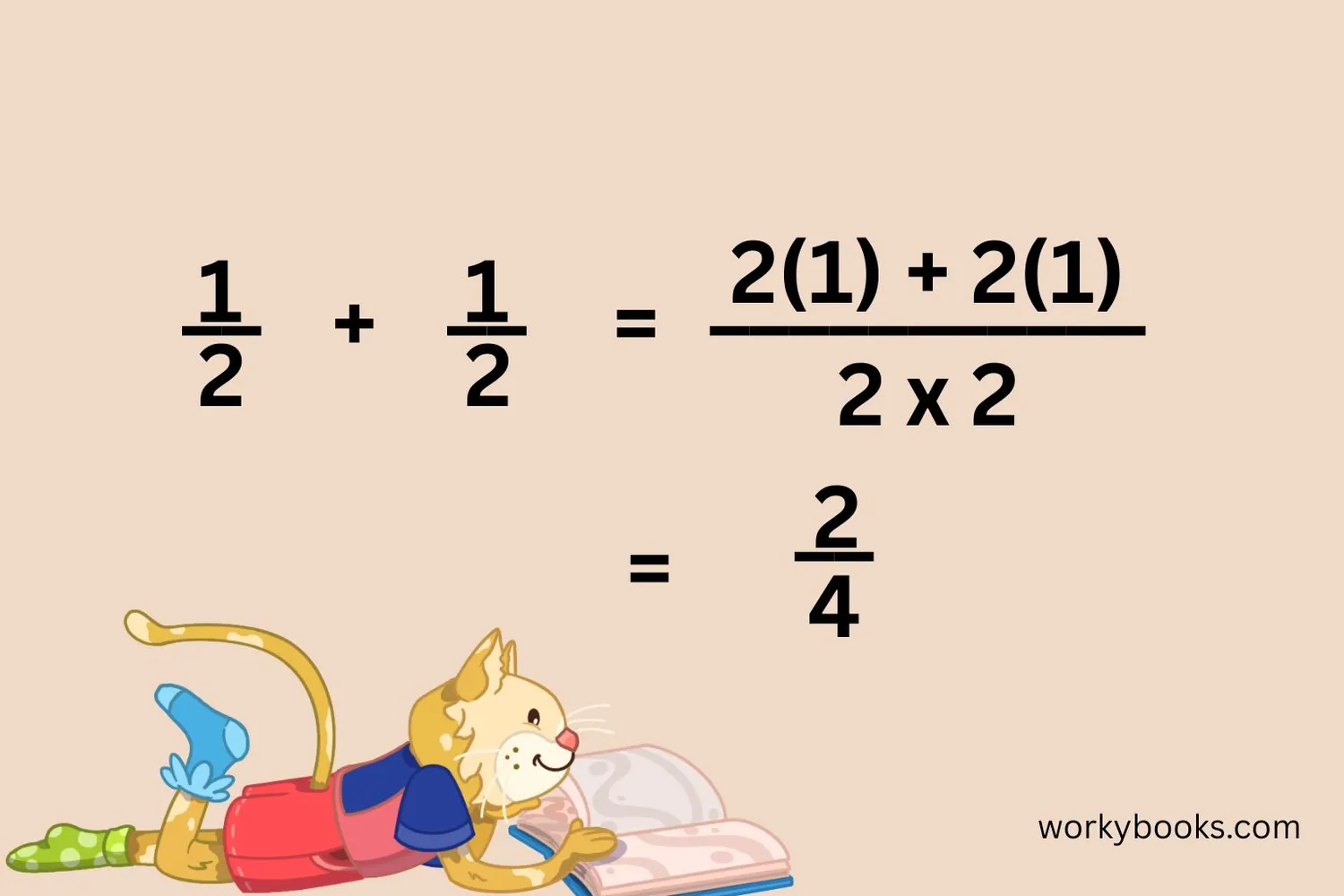
When adding or comparing fractions, we often need common denominators. This means making the denominators the same.
Least Common Denominator (LCD) is the smallest number that can be used as a common denominator for a set of fractions.
How to find a common denominator:
1. Find a number that both denominators can divide into evenly
2. Multiply both numerator and denominator by the same number
Example: To add 1/2 + 1/3, we find a common denominator of 6:
1/2 = 3/6
1/3 = 2/6
3/6 + 2/6 = 5/6
Finding common denominators helps us work with fractions more easily!
Conversion Tip
To find the LCD, find the least common multiple (LCM) of the denominators.
Fraction Operations
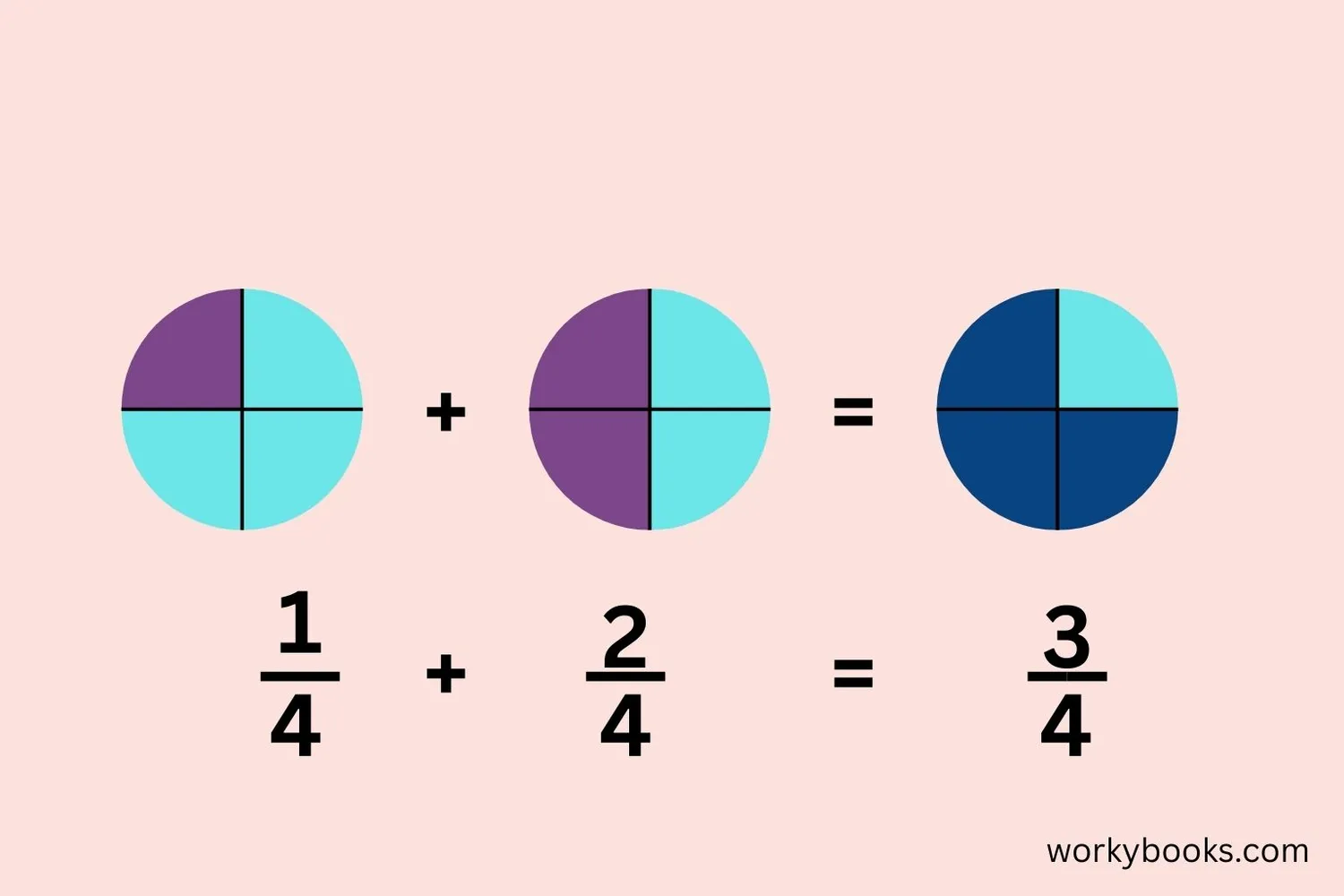
The denominator is crucial for performing operations with fractions:
Adding/Subtracting Fractions:
- Denominators must be the same
- Add/subtract numerators, keep denominator same
Example: 1/4 + 2/4 = 3/4
Multiplying Fractions:
- Multiply numerators together
- Multiply denominators together
Example: 1/2 × 2/3 = (1×2)/(2×3) = 2/6 = 1/3
Dividing Fractions:
- Multiply by the reciprocal (flip the second fraction)
Example: 1/2 ÷ 1/4 = 1/2 × 4/1 = 4/2 = 2
Understanding denominators makes fraction operations much easier!
Remember
When adding or subtracting fractions, only the numerators change if the denominators are the same.
Denominator Practice Quiz
Test your understanding of denominators with this 5-question quiz. Choose the correct answer for each question.
Frequently Asked Questions
Here are answers to common questions about denominators:
Fraction Trivia
Discover interesting facts about fractions and denominators:
Ancient Fractions
The ancient Egyptians used fractions as early as 1800 BC, but they only used unit fractions (with numerator 1). They wrote fractions with a dot above the number.
Fraction Bar Origin
The fraction bar (also called a vinculum) was introduced by Arabic mathematicians in the 12th century. Before that, fractions were written differently in various cultures.
Measuring with Fractions
In the United States, measurements like inches and cups often use fractions (1/2 inch, 1/4 cup). Most other countries use the metric system with decimals instead.
Smallest Denominator
While denominators can be very large numbers, the smallest possible denominator is 1. Fractions with denominator 1 are equal to whole numbers (5/1 = 5).





